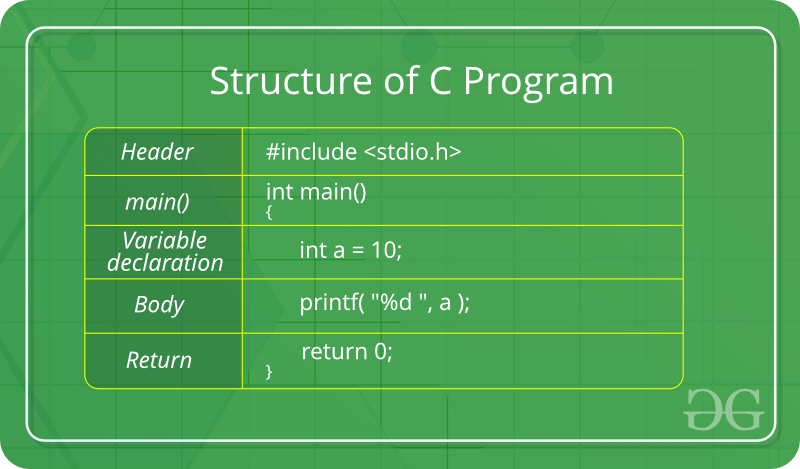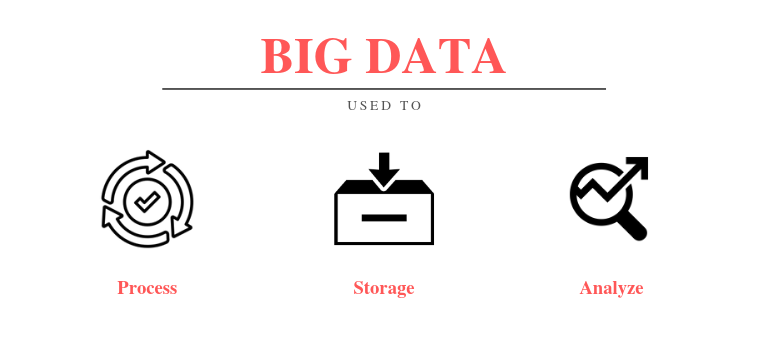C LANGUAGES
1}C LANGUAGES
C is a procedural programming language . It was initially developed by Dennis Ritchie in the year 1972. It was mainly developed as system programming language to write an operating system . The main featured of the C language include low level memory access, a simple set of keyword , and a clean style , these features make C language suitable for system programming like an operating system or compiler development.
Many later languages have borrowed syntax/features directly or indirectly from the C language. Like syntax of Java, PHP, Java script, and many other languages are mainly based on the C language. C++ is nearly a superset of C language (Few programs may compile in C, but not in C++).
Beginning with C programming:
- Structure of a C program
After the above discussion, we can formally assess the structure of a C program. By structure, it is meant that any program can be written in this structure only. Writing a C program in any other structure will hence lead to a Compilation Error.
The structure of a C program is as follows:

- The components of the above structure are:
- Header Files Inclusion: The first and foremost component is the inclusion of the Header files in a C program.
A header file is a file with extension .h which contains C function declarations and macro definitions to be shared between several source files.
- Main Method Declaration: The next part of a C program is to declare the main() function. The syntax to declare the main function is:
- Variable Declaration: The next part of any C program is the variable declaration. It refers to the variables that are to be used in the function. Please note that in the C program, no variable can be used without being declared. Also in a C program, the variables are to be declared before any operation in the function.
- Body: The body of a function in the C program, refers to the operations that are performed in the functions. It can be anything like manipulations, searching, sorting, printing, etc.
- Return Statement: The last part of any C program is the return statement. The return statement refers to the returning of the values from a function. This return statement and return value depend upon the return type of the function. For example, if the return type is void, then there will be no return statement. In any other case, there will be a return statement and the return value will be of the type of the specified return type.
Why learning C Programming is a must?
- C is a Middle-Level Language. The middle-level languages are somewhere between the Low-level machine understandable assembly languages and High-Level user friendly languages. Being a middle-level language, C reduces the gap between the low-level and high-level languages. It can be used for writing operating systems as well as doing application level programming.
- Helps to understand the fundamentals of Computer Theories. Most of the theories related to computers like Computer Networks, Compiler Designing, Computer Architecture, Operating Systems are based on C programming language and requires a good knowledge of C programming if you are working on them. In the modern high level languages, the machine level details are hidden from the user, so in order to work with CPU cache, memory, network adapters, learning C programming is a must.
- Fewer Libraries. C programming language has fewer libraries in comparison with other high-level languages. So, learning C programming also clears programming concepts to a great extent as you have to write lot of things from scratch. You will not be dependent on the programming language entirely for implementing some basic operations and implementing them on your own will also help you to build your analytical skills.
- C is very fast in terms of execution time. Programs written and compiled in C execute much faster than compared to any other programming language. C programming language is very fast in terms of execution as it does not have any additional processing overheads such as garbage collection or preventing memory leaks etc. The programmer must take care of these things on his own.
- Embedded Programming. C is extensively used in Embedded Programming. Embedded Programming is also referred to as micro-controller programming, where C program is used to control micro-controllers. Microcontrollers and embedded programming is widely used in auto-motives, Robotics, Hardware etc.
What are the advantages of C language?
C is a very popular language throughout the world and is ideal for a programmer to learn at the beginning of their career. There is little vocabulary to learn, the syntax is simple, and the modular structure of the language is easier to learn.
1. It is easy to understand
One of the main reasons why people choose C over other programming languages is its simplicity. C is a highly portable language as programs coded in it are far more fast and efficient. This makes learning C easier than any other programming language. You can easily grasp the concepts behind C because there aren't many keywords or symbols involved. In addition, you don't need to be an expert in computer science to get started with C programming. All you have to do is read through some tutorials online and start writing your own codes. Also, there are system-generated functions and user-defined functions in C Language.
2. Presence of many Libraries
C Language provides lots of built-in functions which consist of system-generated functions and user-defined functions. Many general functions can be used to develop a program, while the programmer can also create a function as per their requirements, which is called a user-generated/defined function, in C Compiler.
3. Easy to write
Another reason why C is so popular as an efficient language among programmers is that it allows them to create their own software without having to worry about syntax errors. If you're not familiar with coding, then using structured language C will help you develop better skills. With C, you'll find yourself creating more efficient and effective solutions compared to those created by other programming languages.
4. Low cost
If you want to build something from scratch, then C is definitely worth considering. Because of its simple structure, you won't spend too much time trying to figure out whether you've made a mistake or not when developing your program. And if you decide to hire someone else to complete the task, they would only charge you less money.
5. Fast execution speed
If you want to execute your application quickly, then C is probably the right choice for you. Since C uses fewer instructions, it executes faster than other programming languages such as Java, Ruby, PHP, etc.
6. Portable
Since C is based on ASCII characters, it works well across different platforms including Windows, Linux, Mac OS X, Android, iOS, etc. Therefore, you can run your C programs anywhere regardless of where you live.
7. Easy debugging
Since C doesn't require complex statements like loops, conditionals, variables, functions, arrays, pointers, etc., you can debug your code easily. For example, if you encounter problems while executing your program, just press CTRL+D to stop the process immediately. Then, you can simply step back one line and continue working until you reach the problematic statement.
8. Procedure Oriented Language
Users create procedures or functions to execute their tasks in C Language. It's very easy to learn a procedure-oriented language because of the way it works (algorithm to execute the statements you write). If you want to develop a program using procedure-oriented language, you need to frame an algorithm and start converting it into a function.
9. Speed of Compilation
The C compiler produces machine code very fast. Close to a thousand lines of code can be put together in a couple of seconds. The C Compiler makes the code more efficient for faster execution.
10. Execution of algorithms and data structures
The utilization of algorithms and data structures in C has made program calculations extremely quick and smooth. Subsequently, the C language can be employed in complex estimations and tasks like MATLAB.
11. Dynamic memory allocation
In C Language you can allocate memory dynamically or statically. In dynamic allocation, we don't know how much space will be required for our data structure at run time. But if we use static allocation then we need to reserve a fixed amount of memory before starting the execution of the application. So this feature makes us more flexible than other languages like Java where we must declare all variables as final.
In dynamic memory allocation, you are allowed to distribute memory at run time. For instance, considering that you don't have the foggiest idea of how much memory is needed by objects in your program, then you can proceed to run a program in C and appoint the memory simultaneously.
Happy Learning!










